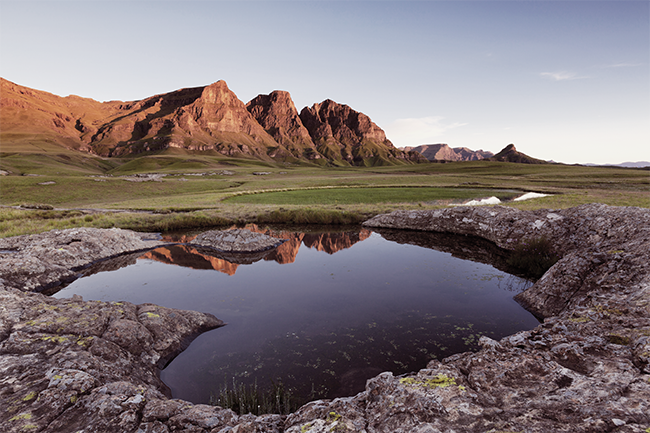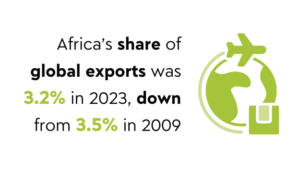Thabana Ntlenyana is Sotho for ‘beautiful little mountain’. Though as the highest peak in Southern Africa, towering at a height of 3 482m, calling it ‘little’ is somewhat of an understatement.
Thabana Ntlenyana is part of the Maluti range, just inside the border between Lesotho and South Africa. It, and other summits in both the Maluti and the neighbouring Drakensberg ranges are striking examples that illustrate why more than 75% of the Kingdom of Lesotho is rated as ‘mountainous’.
Lesotho is only 30 355 km² in area and surrounded entirely by South Africa. The majestic highlands and valleys, home to the world’s largest collection of rock art, with more than 30 000 paintings, have brought tourism and economic benefits such as the Lesotho Highlands Water Project (LHWP).
Nearly 30 years in the making, the LHWP is a massive infrastructure programme between Lesotho and South Africa involving dams, hydroelectric facilities and a series of tunnels to divert water from Lesotho’s mountains to South Africa’s Gauteng province.
First investigated for feasibility in the mid-1950s, Lesotho’s abundant water resources has long been a valuable asset, especially for neighbours South Africa, which is classified as a ‘water-stressed’ country.
Since an understanding was signed between the two governments in 1986, the project is being constructed in phases. Phase 1 was inaugurated in 2004, while Phase 2 is expected to deliver water by 2020.
In total, the LHWP will consist of four phases and involves the construction of five dams and approximately 200 km of tunnels and transfer works between the two nations. The project – expected to cost US$8 billion – will move about 2 000 million m³ of water from Lesotho to South Africa every year.
Lesotho has gained a 72 MW hydroelectric power station (Muela) and also earns royalties from South Africa for the water.
While the mountains have economic benefits (and protected the Basotho nation from invasion in bygone years), they have also presented problems for infrastructure development. Nearly 85% of Basotho households still live in rural areas and about 70% are reliant on agriculture for some or most of their income. Lesotho’s economy remains highly dependant on South Africa.
Traditionally, many Basotho men worked in the latter country’s mines, especially the gold mines, and today remittances home from workers in South Africa still form a big part of the country’s GDP (in the 1990s it was as high as 70%). Unfortunately, since the South African mining industry has been under pressure in recent years due to declining commodity prices, the knock-on effect has also been felt in Lesotho.
According to IndexMundi, Lesotho imports 90% of the goods it consumes from South Africa. ‘Customs duties from the Southern African Customs Union accounted for 44% of government revenue in 2012,’ it states in a report, pointing out that government consumption ‘accounted for 39% of GDP in 2013, and the government remains Lesotho’s largest employer’. However, there have been some important diversifications in the economy.
The country reaped large benefits from the African Growth and Opportunity Act of 2000, which offered duty-free entry into the US for certain products from African countries that adopted free-market economic policies, and encouraged US trade and investment. Several big Chinese and Taiwanese textile companies set up factories in Lesotho and at one stage in the mid-2000s, the industry employed around 56 000 workers. US brands such as Gap, Levi Strauss, and Timberland sourced their goods from Lesotho. But following changes in world trade regulations, particularly regarding China, some companies have pulled out of Lesotho and clothing manufacturing employment has now dropped to around 36 000 local workers.
Outside of construction, which has also been an important sub-sector, Lesotho has valuable mineral deposits, such as uranium and especially diamonds. Paragon Diamonds, for example, listed on the London Stock Exchange, operates two mines in Lesotho – Lemphane and Mothae. The company estimates full operational capacity within three years when the mines should produce around a combined 100 000 carats a year.
Firestone is another London-listed miner that has assets in Lesotho – in its case a 75% stake in the Liqhobong mine. The company recently announced that adverse weather and the need for more earthworks had affected the production schedule, which will now be somewhere in the fourth quarter of 2016 for the first stones.
Among the established mines is Kao, which has the largest diamond-bearing diamond pipe in Lesotho. Owned by Storm Mountain Diamonds, Kao produced two ‘exceptional’ pink diamonds last year – the 36.06-carat ‘Pink Storm’ and the 23.82-carat ‘Lesotho Storm’.
Although the mountains allow only about 10% of the land to be cultivated, the majority of Lesotho’s people are active in subsistence farming, growing mostly maize and wheat, with some sorghum and barley. However, only around 30% of the country’s needs are being met through cereal production compared to 80% in 1980, according to New Agriculturist, although the government is promoting programmes to use farming as a tool for poverty reduction. The African Development Bank has reported that unemployment is currently around 25% with a 57% poverty level.
Inequality is one of the biggest problems facing the country’s economy, says the African Economic Outlook (AEO) in a report. Other challenges include ‘a lower degree of diversification, low domestic savings leading to over-dependence on foreign capital inflows, high unemployment, and poverty.
Added to this is the burden of HIV/Aids particularly on the young generation’. Yet it stated that in spite of the issue, the economy remained resilient. ‘Growth was estimated at 4.3%, supported by recovery in diamond production, modest performance in particular crops in the agricultural sector, electricity and water, wholesale trade, real estate and building, transport and communications, and financial intermediation.’
The organisation went on to recommend that the government needed ‘to undertake deep reforms to improve capacity, accountability and efficiency.
‘Clothing, textiles and livestock are the most important value chains with considerable potential to contribute to economic growth and poverty reduction’.
However, it is Lesotho’s political situation that concerns analysts the most due to the negative effect on investment. Since independence in 1966 there have been several coups and many serious occasions of infighting among the main political parties.
The latest incidents occurred in August last year following several months of political tension among the coalition government after then Prime Minister Tom Thabane suspended the country’s parliament.
In the wake of confused reports of a coup attempt, which later appeared to be foiled, South African police had to escort Thabane back to the capital. SADC then brokered a deal among the political parties allowing parliament to reopen.
Elections were held in February this year – two years ahead of schedule – and went off peacefully. Another coalition was formed, which this time will hopefully bring stability to the ‘kingdom in the sky’.
















